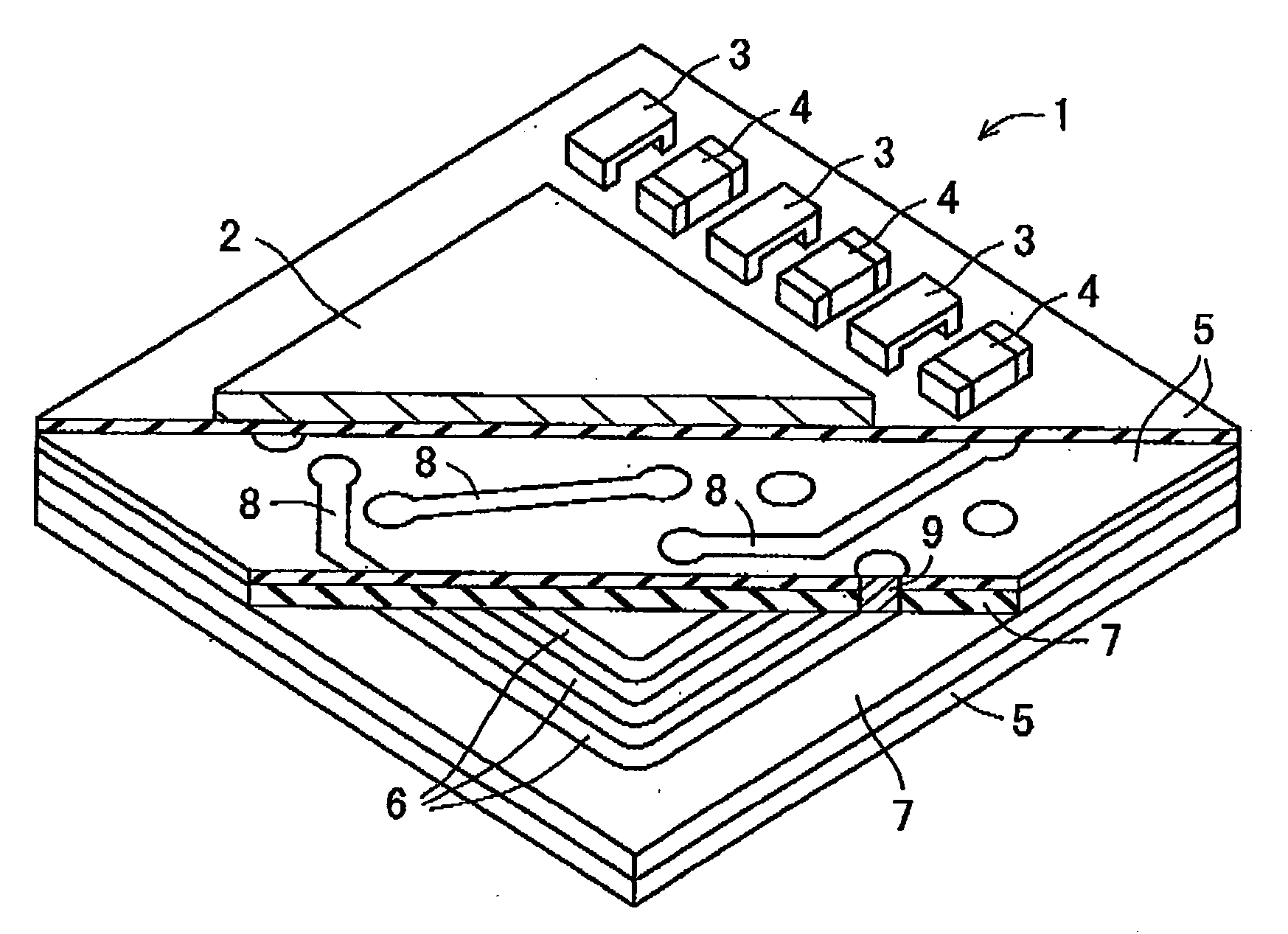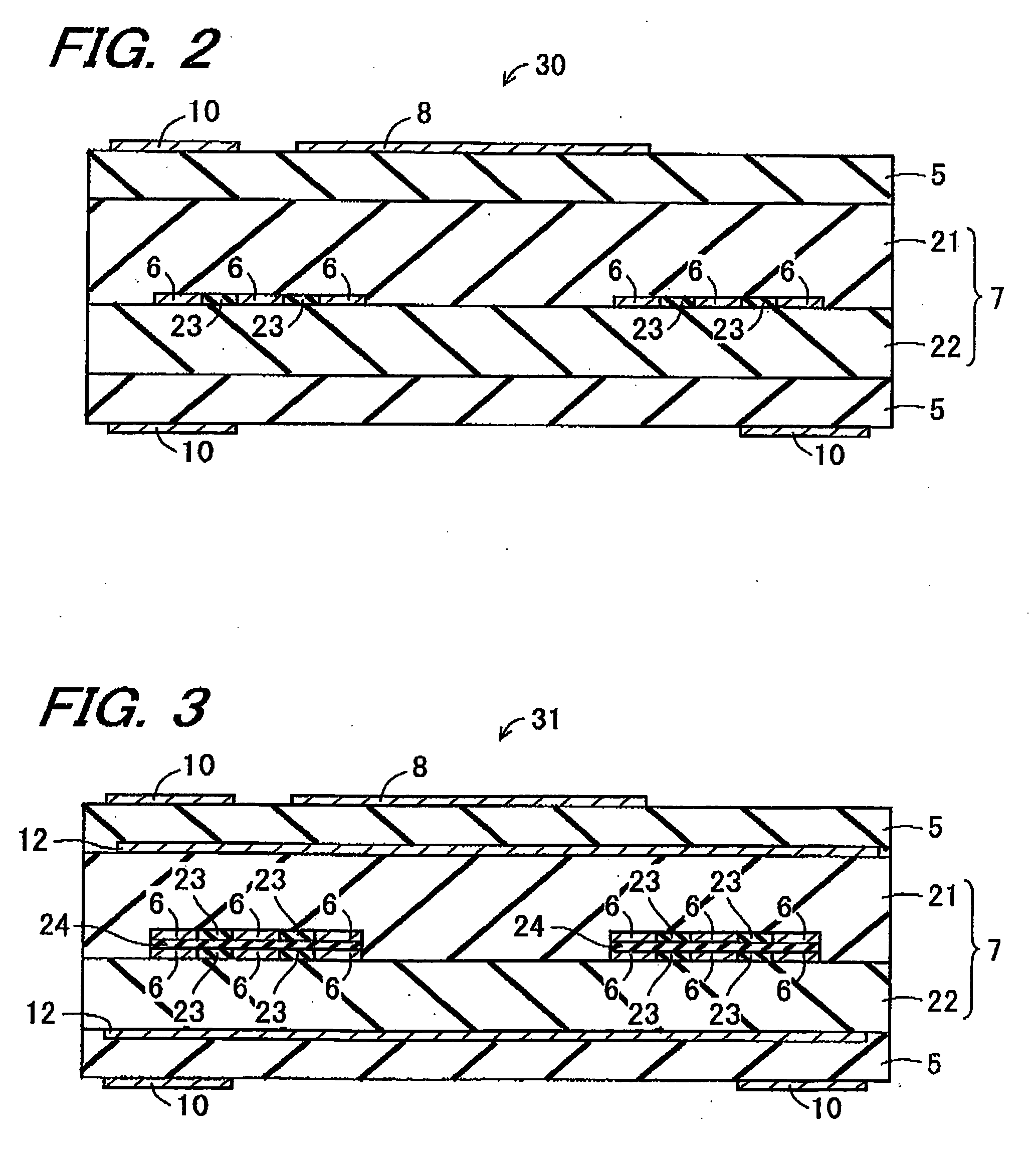Ferrite material and ceramic substrate
- Summary
- Abstract
- Description
- Claims
- Application Information
AI Technical Summary
Benefits of technology
Problems solved by technology
Method used
Image
Examples
example 1
[0135] Raw materials of varying composition as given in Table 1 were adjusted to weigh 250 g on an individual basis. The constituents of the raw material have been blended with a liter of pure water for 24 hours in a 2-liter ball mill constructed of a zirconia pulverization ball. Following a fractional drying process, the raw material powder was fired tentatively in a zirconia crucible at a temperature of 730° C. After it has been determined that there is obtained a desired compound by means of X-ray diffraction, the raw material was pulverized into small particles by a ball mill and dried. The powder particles were sifted out through a mesh sieve to obtain tentatively-fired powder having a particle size of 0.5 to 0.7 μm. Subsequently, the powder was granulated by a stone mill, with a 10% by mass of PVA solution added. The granulated powder thus obtained was subjected to stamping with a die and fired in an air atmosphere at a temperature of 900° C. for two hours. In so doing there w...
example 2
[0141] To begin with, a non-magnetic ferrite green sheet was formed as follows to form a non-magnetic ferrite layer acting as an insulating layer. At first 630 parts by mass of Fe2O3 powder, 80 parts by mass of CuO powder, and 290 parts by mass of ZnO powder are blended with 4000 cm3 of pure water for 24 hours in a 7000 cm3-ball mill constructed of a zirconia pulverization ball. Following a fractional drying process, the raw material powder is fired tentatively in a zirconia crucible at a temperature of 730° C. In do doing there is prepared tentatively-fired non-magnetic ferrite powder. Subsequently, 10% by mass of butyral resin and, as a diluent, 45% by mass of alcohol of high molecular weight are added with respect to 100% by mass of the tentatively-fired non-magnetic ferrite powder thus obtained. They are blended together by a ball mill technique to form a slurry. The slurry is then formed into a 100 μm-thick non-magnetic ferrite green sheet by the doctor blade method.
[0142] The...
example 3
[0152] A ceramic substrate was fabricated by way of Example 3 basically in the same manner as in Example 2, the only difference being that electromagnetic shielding layers are interposed between the first ferrite layer and one insulating layer and between the second ferrite layer and the other insulating layer, respectively, face to face with the planar spiral coil. The electromagnetic shielding layers were formed as follows. At first 12 parts by mass of acrylic resin and 2 parts by mass of α-terpineol acting as an organic solvent are added with respect to 100 parts by mass of Ag powder. They are blended thoroughly by an agitating / defoaming machine and then kneaded thoroughly by a three-roll mill to form a conductor paste. The conductor paste is applied to the predetermined regions in a thickness of 20 μm by the screen printing technique, the area of which is one-half that of the planar spiral coil. Lastly, the coating is dried for 30 minutes at a temperature of 70° C. Measurement w...
PUM
| Property | Measurement | Unit |
|---|---|---|
| Percent by mass | aaaaa | aaaaa |
| Percent by mass | aaaaa | aaaaa |
| Electrical resistance | aaaaa | aaaaa |
Abstract
Description
Claims
Application Information
 Login to View More
Login to View More - R&D
- Intellectual Property
- Life Sciences
- Materials
- Tech Scout
- Unparalleled Data Quality
- Higher Quality Content
- 60% Fewer Hallucinations
Browse by: Latest US Patents, China's latest patents, Technical Efficacy Thesaurus, Application Domain, Technology Topic, Popular Technical Reports.
© 2025 PatSnap. All rights reserved.Legal|Privacy policy|Modern Slavery Act Transparency Statement|Sitemap|About US| Contact US: help@patsnap.com



